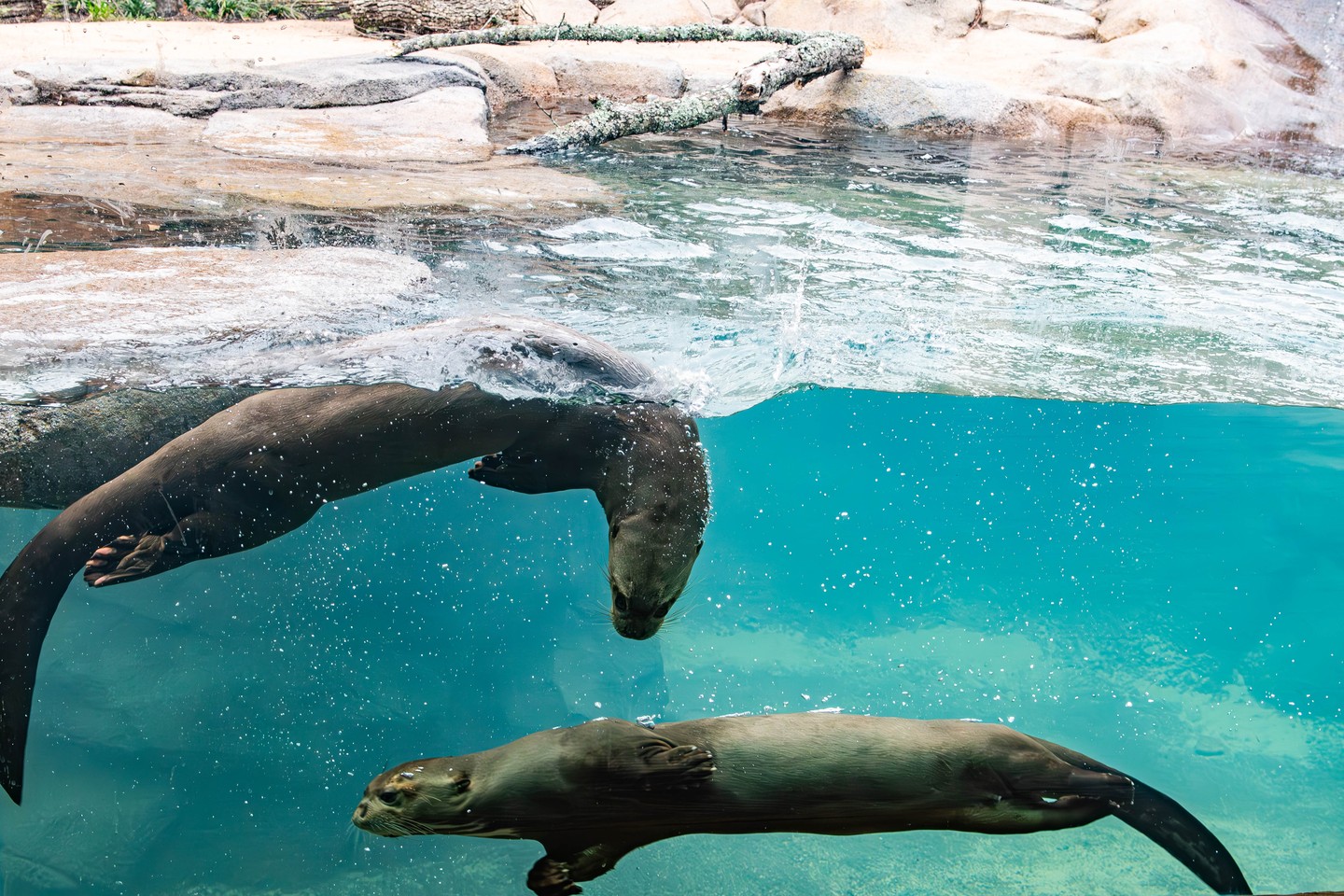- The fascinating biology and behavior of giant river otters
- The specific environmental and social needs of giant otters in a zoo setting
- The role of enrichment activities in promoting natural behavior in captivity
- Conservation efforts to protect giant river otters in the wild and in zoos
- The significance of educational media coverage in raising awareness about giant otters
Giant river otters are captivating creatures native to the waters of South America, renowned for their sociable nature and remarkable adaptation to aquatic life. Meet Mazaruni and Salvador, two charismatic giant river otters who are enthralling visitors at the Caldwell Zoo. Understanding the biology and behavior of these remarkable animals is essential for appreciating their ecological role and ensuring their welfare in both wild habitats and zoological settings.
Giant river otters, also known scientifically as Pteronura brasiliensis, are the largest members of the mustelid family, which includes weasels, ferrets, and other otters. These sleek mammals can grow up to six feet long, making them formidable predators in the Amazon and Orinoco river basins. Their streamlined bodies, webbed feet, and dense fur are perfectly adapted to an aquatic lifestyle, enabling them to navigate swiftly through waters in search of prey. Fish form the bulk of their diet, but they are also known to eat crustaceans and small vertebrates.
The sociable nature of giant river otters is one of their most captivating traits. Unlike many other otter species, they live in tight-knit family groups, known as holts, typically consisting of a breeding pair and their offspring. This social structure facilitates the cooperative behavior needed for hunting and maintaining territory. Communication is vital within these groups, and they exhibit a rich repertoire of vocalizations, ranging from whistles to growls, each serving distinct purposes such as alerting to danger or coordinating group activities.
In a zoo environment, replicating the natural conditions favored by giant river otters is crucial for their health and well-being. The Caldwell Zoo’s Amazon River’s Edge replicates a section of a tropical river environment, providing Mazaruni and Salvador with ample space to swim, dive, and play. Environmental conditions such as water temperature, quality, and depth are finely managed to match their natural habitat. Additionally, social interactions with other otters and zookeepers provide necessary mental stimulation and engagement.
A key aspect of caring for giant river otters in captivity is the provision of enrichment activities. Enrichment is a vital component of animal welfare in zoos, designed to encourage natural behaviors and prevent boredom. For Mazaruni and Salvador, enrichment might include the introduction of new toys, varied feeding schedules, or challenges such as hiding food items in puzzle feeders. These activities not only stimulate them physically and mentally but also help observers and keepers understand their preferences and behavioral intricacies better.
Giant river otters, despite their captivating nature, face numerous challenges in the wild. Habitat destruction, pollution, and poaching have led to a decline in their populations, prompting the International Union for Conservation of Nature (IUCN) to classify them as endangered. Zoos play a crucial role in conservation efforts, acting as safeguards for insurance populations and participating in global breeding programs designed to ensure genetic diversity and population stability.
Conservation in zoos is only part of the larger effort to protect these animals. Field projects focusing on habitat restoration, anti-poaching efforts, and the establishment of protected areas are equally important. Collaborations between zoos and wildlife organizations help create comprehensive conservation strategies, including community education programs that underscore the importance of maintaining biodiversity and ecosystem health.
Educational media coverage, such as CBS 19’s segment on Meet Mazaruni and Salvador, is vital for raising public awareness and support for these conservation efforts. By bringing the story of the Caldwell Zoo’s giant river otters to a wider audience, media segments can inspire curiosity and concern for wildlife among viewers. This increased visibility helps foster a connection between people and animals, encouraging a sense of responsibility and stewardship for the natural world.
Presenting factual content about giant river otters can drive home the importance of their conservation. As more people become aware of their plight, the hope is that efforts to preserve their natural habitats and ensure their continued survival will gain momentum. Programs like CBS 19’s not only shine a spotlight on these remarkable creatures but also encourage public engagement in conservation initiatives.
The story of Mazaruni and Salvador highlights human commitment to understanding and safeguarding wildlife. By honoring the complexity and beauty of giant river otters, we not only enrich our own lives but also contribute to the enduring balance of ecosystems that depend upon these mesmerizing mammals. Through concerted efforts in education, research, and conservation, a brighter future beckons for giant river otters both inside zoo enclosures and out in the wild waters of South America.
*****
Source Description
Meet Mazaruni and Salvador, the giant river otters who are stealing the hearts of guests from all over! 🦦 On today’s segment of Exploring the Caldwell Zoo with CBS 19, we dive into Amazon River’s Edge to learn all about giant otter behaviors and how keepers provide special enrichment for these graceful and playful mammals. Tune into CBS 19 tonight at 5 pm to catch the segment! 🌊


